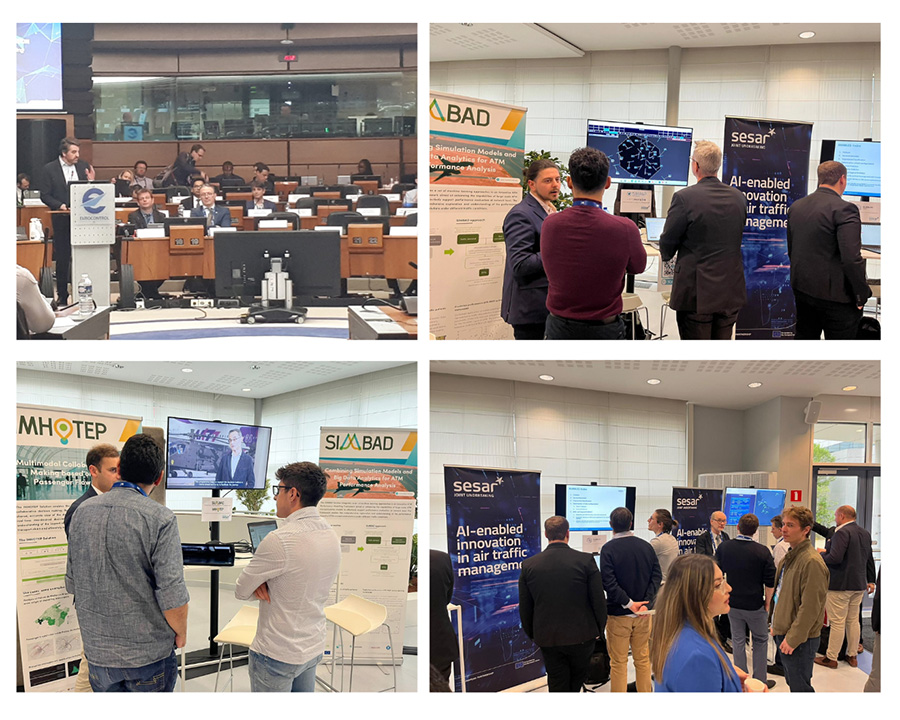Assessing the performance of air transport management and the impact of new concepts aiming to improve the network performance requires a detailed simulation of airspace use. The development of performance modelling methodologies able to simulate the impact of new technologies at a system-wide level has been a long-time objective of the industry. Microsimulation models are often the only feasible approach to address this problem in a reliable manner. However, the practical application of large-scale simulation models to strategic ATM performance assessment is often hindered by their computational complexity.
The SIMBAD project developed and evaluated a set of machine learning approaches aimed at enhancing the capabilities of start-of-the-art large-scale airspace management microsimulation models to effectively support performance evaluation at the network level. The solution includes machine learning algorithms for trajectory modelling and for the estimation of hidden variables related to airspace users’ behaviour; machine learning algorithms for multi-scale traffic pattern classification that allow the identification of demand patterns to assess new SESAR solutions; and active learning-based meta-models for a more efficient, hence faster, exploration of the simulation space. The developed models and techniques were demonstrated for two microsimulation models: R-Nest and DYNAMO.
The SIMBAD innovative airspace management performance modelling framework comprises three parts: 1) a model for the estimation of hidden variables related to airspace user behaviour that are necessary inputs for air traffic microsimulation models (e.g., cost index and mass payload); 2) a methodology to identify representative traffic patterns at different scales (Europe-wide, country-wide, control centre and airport level) for each particular problem under study; and 3) a meta-modelling framework that enables the approximation of the results of a microsimulation model to facilitate a more efficient exploration of its input-output space.
The solution delivers a more comprehensive, accurate, and efficient assessment of the performance impact of new airspace management solutions and concepts, and has a positive impact across all the SESAR key performance areas and ultimately on European ATM Master Plan performance ambitions.
Benefits
- Comprehensive performance assessment
- Efficient assessment of new ATM solutions



